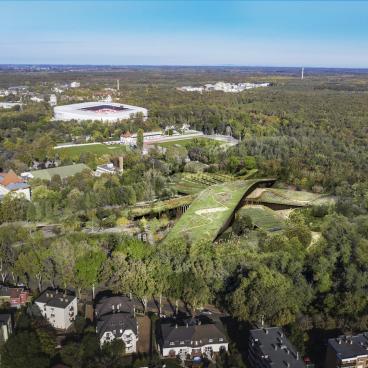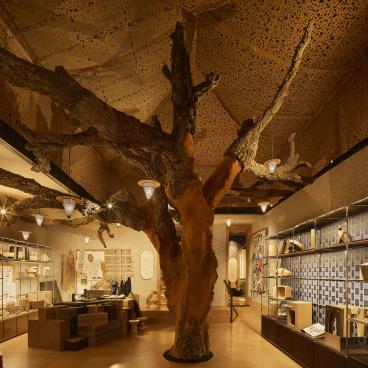Russwood asks: As a sector, are we stacked up to use mass timber on our projects?
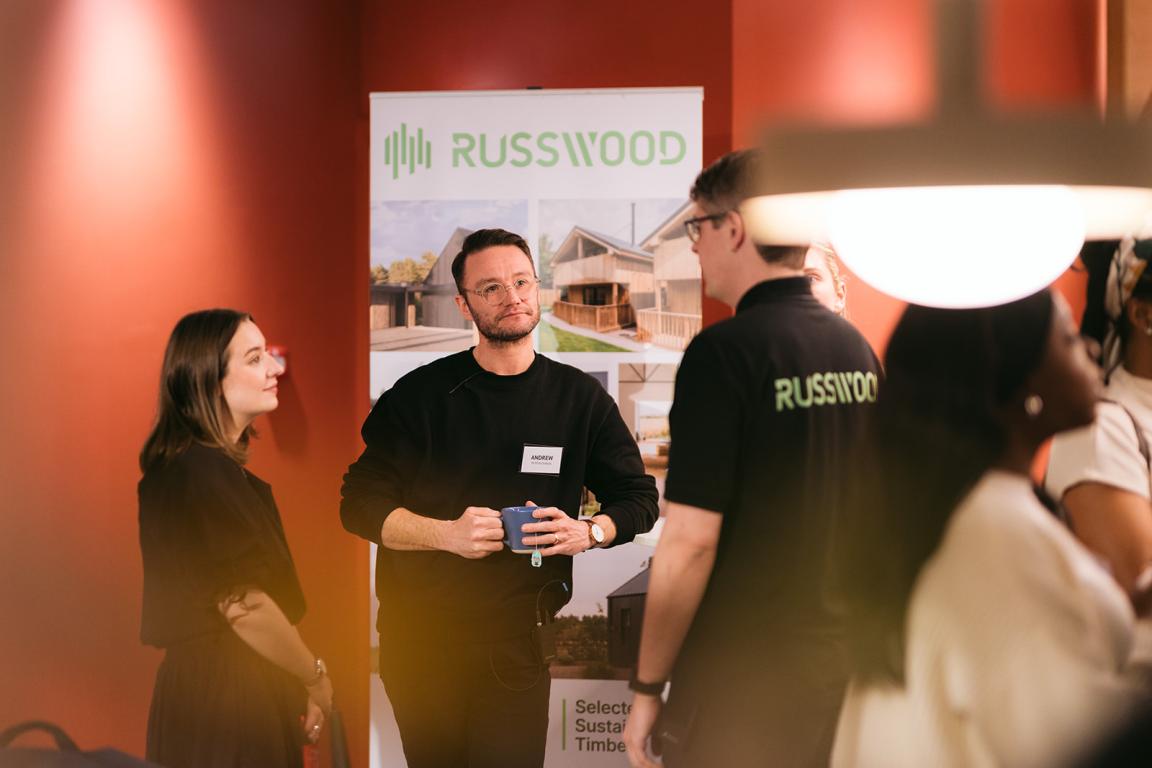
In theory, the use of timber in architecture and design seems an amazing alternative to more traditional, resource-intensive building materials.
So then why hasn't it been adopted en-masse by the construction and architecture industries?
This is the topic our Glasgow Studio Partner, Russwood, explored with a panel of four sector professionals in conversation with host and Material Source director, David Smalley, and an audience of architects and interior designers, to establish how far we are from widely embracing timber in retrofit and reuse projects in the UK and beyond.
With increasing focus on sustainability in the built environment, the conversation tackled misconceptions of timber, market challenges, and covered actionable tips to design with reuse and the circular economy in mind. From regulatory hurdles to timber skyscrapers, here, Russwood shares with us some of the key learnings from the session.
Panellists
Katherine Adams – Co-founder and director of Reusefully, focused on material reuse at the end of a building’s life.
Matt Stevenson – Founder of ECOSystems Technologies, recognised industry leader in digital construction technology and low carbon building designs.
Gareth Davies – Head of Technical and R&D at Russwood, specialising in timber performance, modification, and durability.
Andrew Hadden – Associate Architect at HLM Architects and President of the Glasgow Institute of Architects (GIA), Andrew is an advocate of mass timber in design.


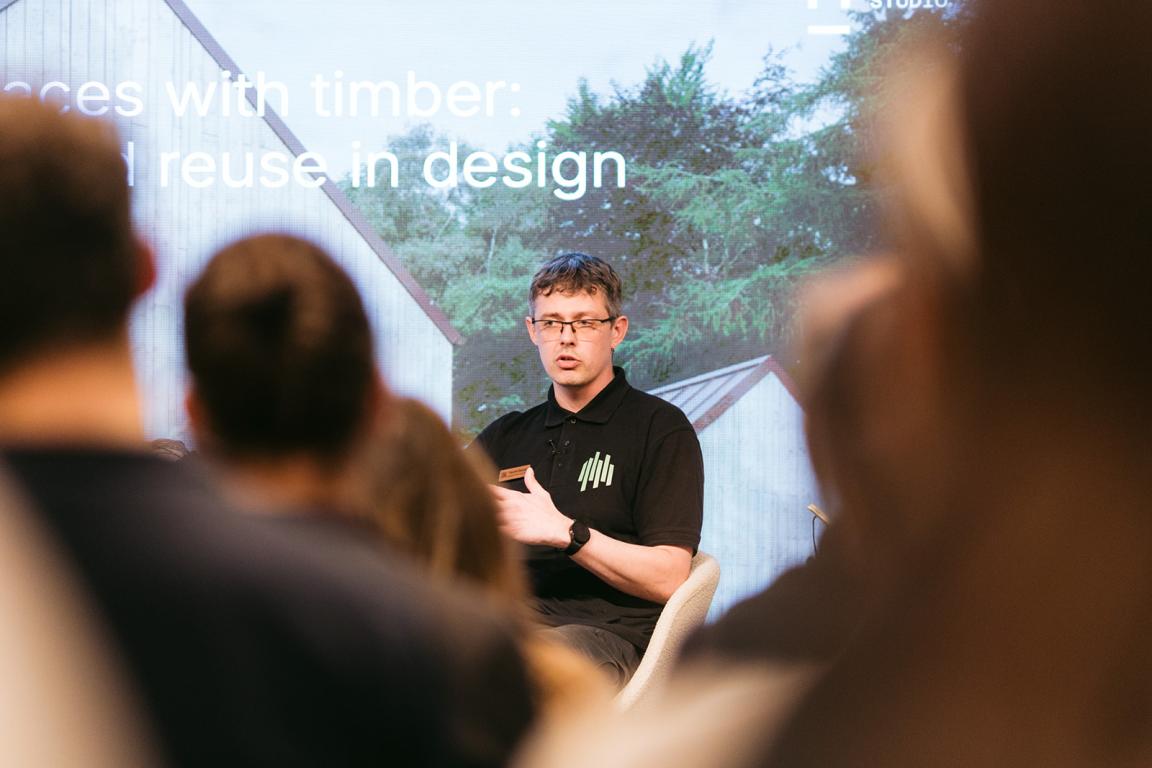
The terminology of timber
To clarify key timber-related terms, Matt kicked off with an overview:
CLT (Cross-Laminated Timber) – A stable, multi-layered engineered wood product.
Glulam – A strong structural timber made by gluing layers of wood with aligned grain.
Nail-Laminated Timber – An alternative to adhesive bonding, often using wooden nails for sustainability.
Meanwhile, Gareth explained modified timber and preservation techniques, particularly thermal modification, which enhances durability and stability through a controlled heating process. He acknowledged the energy required for thermal treatment but emphasised that the extended lifespan of treated wood justifies the trade-off. “With thermal modification, you’re taking a material with a limited service life and dramatically extending it.”
Retrofit & reuse
Andrew highlighted a knowledge gap in mass timber use, noting that HLM Architects is investing significant time and resources into its adoption. He cited the GIA Awards, where only four out of 54 projects utilised mass timber – highlighting the need for greater awareness.
Matt provided a real-world example of reusing CLT from a defunct modular housing project, demonstrating the value of designing for disassembly and reuse.
Andrew further explained, “Architects are in a really challenging market place generally at the moment. The market has been seriously affected by inflation and rising construction costs, this directly feeds into using timber as we know that mass timber is a more expensive product than steel and concrete.”
Katherine shared insights into timber’s reuse potential, noting that while reclaimed materials are often niche, creative repurposing – such as turning old studwork into flooring – is gaining traction.
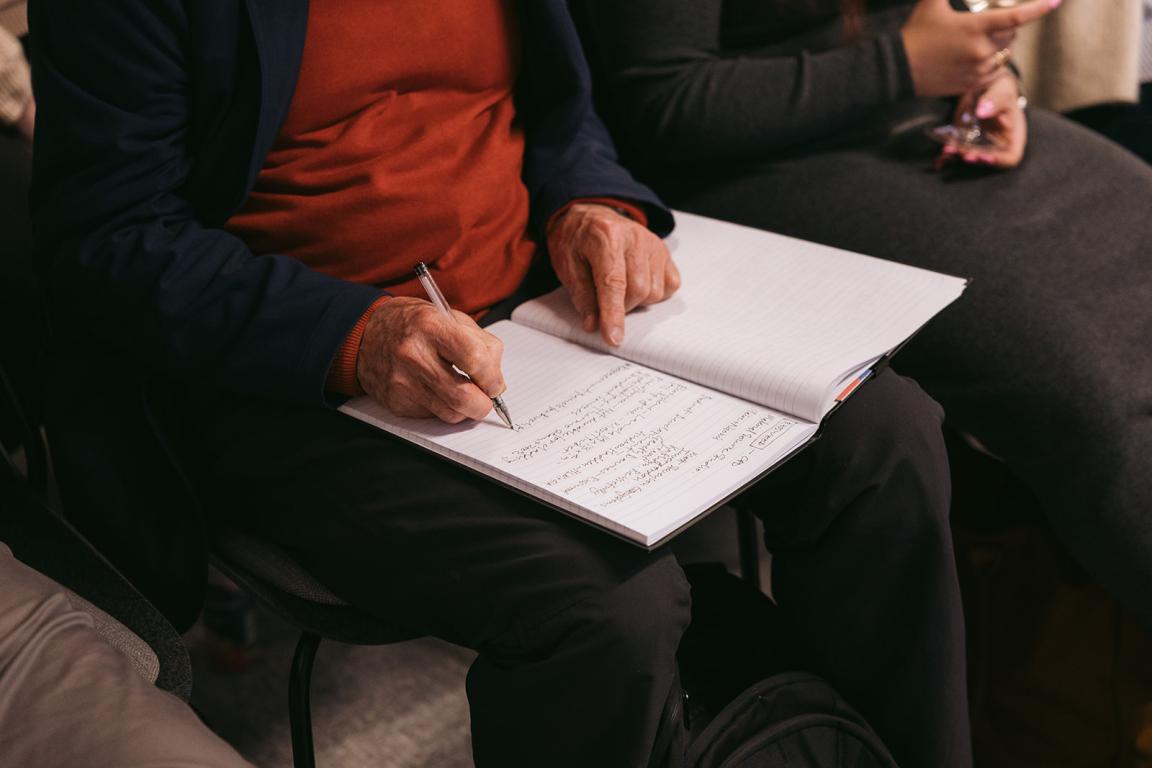


Addressing the challenges
Considering the wider societal context, the panel addressed key barriers to wider timber adoption:
Gareth highlighted that current UK building regulations, particularly in Scotland post-Grenfell, restrict timber use in multi-story and public buildings, making mass timber less accessible than in countries like Austria and Denmark.
Gareth also discussed the shift towards using screws instead of ring shank nails in timber construction, which facilitates easier deconstruction and recycling.
Matt explained, “it’s easy to feel discouraged by the market, but I stay buoyant. We’re fortunate that people come to us wanting to decarbonise their properties. Not everyone is there yet, but pioneers will lead the way and disrupt the market.”
He also emphasised the future need for resource efficiency, saying: “Right now, we’re lazy because resources are available. But we will bump up against resource scarcity, and when we do, deliberate thinking about how we use materials will become crucial – timber will come to the fore.”
An education
Schools are emerging as leaders in adopting timber-based construction. David asked the panel why this might be the case.
Gareth shared that the government incentivises a drive towards carbon neutral buildings, and off-site manufacturing results in “much higher quality and performance characteristics”. He also explained that Russwood is developing a modular prefab cladding system for large school projects in England, which is really exciting.
Matt described a council project using homegrown mass timber for school refurbishments, significantly reducing construction time and on-site disruption to classes.

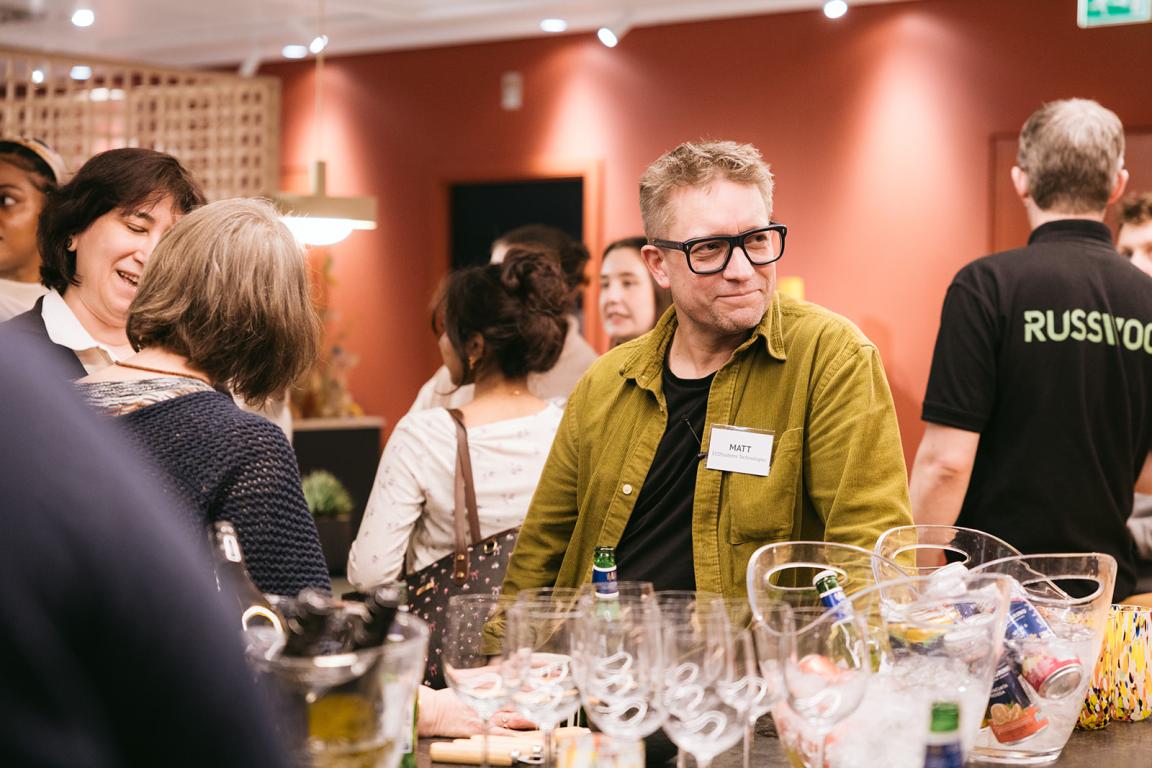

Key takeaways
To close the discussion, David asked the panel for their one key piece of advice for anyone looking to design with timber:
Andrew urged designers to stay passionate about timber, despite regulatory and cost challenges. “Stick to your guns and be enthusiastic and passionate about it – I think that’s infectious.”
Matt emphasised perseverance, asserting that commitment to timber pays off in the long run.
Katherine advocated for circular thinking – ensuring timber can be reused by designing for future disassembly.
Gareth reminded the audience that timber is a diverse topic with many different applications, and urged them to seek advice from Russwood when specifying to achieve the performance they need.
The Russwood team summarises: "As the industry grapples with sustainability, retrofit strategies, and circular economy principles, timber continues to prove its value. Despite market challenges, regulatory hurdles, and supply chain issues, the panel left the audience with an optimistic outlook: with the right expertise, passion, and commitment, timber can be at the heart of a more sustainable built environment."
Discover more from Russwood by visiting Material Source Studio Glasgow, where it is a Partner.
All image credits: Lewis Cannon



